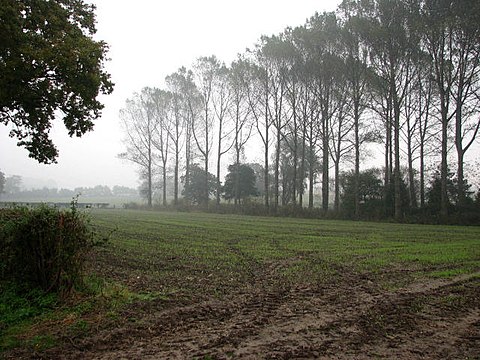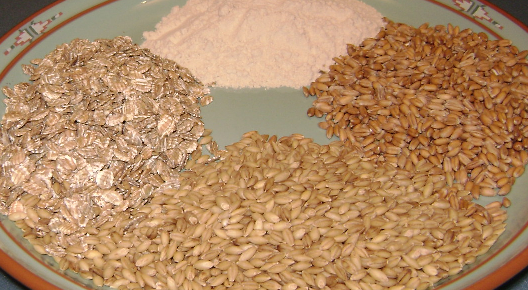Who would have imagined that something as straightforward as the natural numbers (1, 2, 3, 4,…) could give birth to anything so baffling as the prime numbers (2, 3 ,5, 7, 11, …)?
—— Ian Stewart
素数的分布
The ‘average’ distribution of primes is very regular; its density shows a steady but slow decrease. On the other hand the distribution of the primes in detail is extremely irregular. (G.H.Hardy)
God may not play dice with the universe, but something strange is going on with the prime numbers. (Carl Pomerance/Paul Erdős)
The prime number theorem shows that the primes have some large-scale structure, even though they can behave quite randomly at smaller scales.(Terence Tao)
On the other hand, the primes also have some local structure. For instance,(Terence Tao)
- They are all odd (with one exception);
- They are all adjacent to a multiple of six (with two exceptions);
- Their last digit is always 1, 3, 7, or 9 (with two exceptions).
素数的随机分布
在整体上表现出正则性倾向而在局部却呈现出无规则性态,这是素数分布的一个值得注意的地方。
素数就像对物理学家极其重要的“理想气体”,客观地讲,其分布可以说是确定的,然而当我们试图描述它在一给定点的情况时,我们却观察到类似掷骰子碰运气的赌博那样的统计振荡。
素数如同理想气体那样占据着所能允许的整个空间(而这正意味着随机性),也就是说,素数在那些非常严格使之极端正则的限制性条件下有着充分的自由度。
在大多数关于素数的猜想中都隐含着这样的观点:任何不是显然不可能的实际都是可实现的。(Les Nombres Premiers)
素数之美
我们可以用相当好的准确度来预测N以内素数的个数.另一方面,素数在一些短区间内的分布是相当没有规律的。这种既“随机”又可预测相组合便使得素数的分布既是有序的排列,同时又有意外的现象。Schroeder在他精彩的书《科学和通信中的数论》(1984)一书中,把这种现象称作是艺术作品的基本要素。许多数学家都认为素数分布问题具有极大的美学动力。(The little book of bigger primes)
重要事实
The series \(\sum \frac{1}{p} = \frac{1}{2} + \frac{1}{3} + \frac{1}{5} \dots \) is divergent. 而\( \sum_{n=1}^{\infty}\frac{1}{n^2} = \frac{\pi^2}{6} \),这说明质数是正整数集的真正有份量的子集
Euler product
\(\displaystyle {\begin{aligned}\prod _{p,\in ,\mathbb {P} }\left({\frac {1}{1-{\frac {1}{p^{s}}}}}\right) = \sum _{n=1}^{\infty }{\frac {1}{n^{s}}}.\end{aligned}}\)
holds for all s such that the left-hand side converges absolutely.
\( \sum _{n≤x} {\frac{1}{n}} = \log x + \gamma + O(1/x) \)
where \( \gamma \) is Euler-Mascheroni constant.
\( \gamma=0.577215664901532860651…. \)
\( \sum _{p≤x} {\frac{1}{p}} = \log \log x + B_1 + O(\frac{1}{\log x}) \)
where \( B_1 \) is Mertens constant.
\( B_1=0.2614972128… \).
Brun’s Constant
The number obtained by adding the reciprocals of the odd twin primes, \( B≡(1/3+1/5)+(1/5+1/7)+(1/11+1/13)+(1/17+1/19)+… \), By Brun’s theorem, the series converges to a definite number, which expresses the scarcity of twin primes, even if there are infinitely many of them.
B≈1.902160583104
The logarithmic function
\(log x \) tends to infinity more slowly than any positive power of x.
\(\frac{log x}{x^δ} → 0 \) for every positive δ.
The function \( \frac{x}{log x} \) tends to infinity more slowly than x but more rapidly than \( x^{1-δ} \), and it is the simplest function which has this property.
The Prime Number Theorem
The number of primes not exceeding x is asymptotic to \( \frac{x}{log x} \).
The nth prime is approximately equal to \( nln n \).
\( \displaystyle \pi (x)\sim {\frac {x}{\log x}} \).
\( \displaystyle \pi (x)\sim \operatorname {Li} (x)=\int _{2}^{x}{\frac {dt}{\log t}}=\operatorname {li} (x)-\operatorname {li} (2). \)
Riemann hypothesis is equivalent to
\( \displaystyle \pi (x)=\operatorname {Li} (x)+O\left({\sqrt {x}}\log x\right) \)
\( \forall \varepsilon > 0, \pi (x)=\operatorname {Li} (x)+O(x^{\frac{1}{2}+ε}) \)
Observe that
\( \displaystyle \pi (x) \) greater than the ‘logarithm integral’ \( \operatorname {Li} (x) \) depends upon the largeness of \( log log log x \) for large x.
John Edensor Littlewood found that the sign of the difference \( \pi (x)-\operatorname {Li} (x) \) changes infinitely often.
Any prime number,except 2 or 3,is 6n+1 or 6n+5.
素数与混沌
素数表显示了素数的混沌特性,而其表面的无序性最终却与一些,比如说源于物理现象的经典随机模型相吻合。
完全随机即混沌具有无穷大的复杂度;另一方面,整数的复杂度显然是随其大小的增加而增大;在无穷远处,整数序列表现出随机的性状,因而素数序列也蕴涵着随机性。(Les Nombres Premiers)
素数-随机-混沌
Probabilistic number theory: different prime numbers are, in some serious sense, like independent random variables.
Dynamical: the prime numbers were seen to be moving particles in a 1-dimensional continuum
Cramér & 模1一致分布: 素数序列看起来就像一个受同样增长性约束的随机序列
素数似乎达到了他们所能被允许的随机性的极限。
素数的整体分布参数不足以用来描述它们局部的不规则性。
Euler as Bach of Math
Mathematicians have tried in vain to this day to discover some order in the sequence of prime numbers, and we have reason to believe that it is a mystery into which the mind will never penetrate. - Leonard Euler
Gauss as Mozart of Math
The problem of distinguishing prime numbers from composite numbers and of resolving the latter into their prime factors is known to be one of the most important and useful in arithmetic. It has engaged the industry and wisdom of ancient and modern geometers to such an extent that it would be superfluous to discuss the problem at length…Further, the dignity of the science itself seems to require that every possible means be explored for the solution of a problem so elegant and so celebrated. - G.F.Gauss
Sieve
Terence Tao
The sequence of primes behaves “unpredictably” or “randomly”, we do not have a (useful) exact formula for the nth prime number pn!
Despite not having a good exact formula for the sequence of primes, we do have a fairly good inexact formula as Prime number theorem.
The von Mangoldt function(as an analogy, sound wave) which is noisy at prime number times, and quiet at other times.
Fourier transforms is just like listenning to this wave and record the notes that you hear (the zeroes of the Riemann zeta function, or the “music of the primes”). Each such note corresponds to a hidden pattern in the distribution of the primes.
The infamous Riemann hypothesis predicts a more precise formula for pn, which should be accurate to an error of about \( \sqrt n \).
If the Riemann hypothesis is true, we can remove one exponential.
Interestingly, the error \( O(\sqrt n ㏑^3 n) \) predicted by the Riemann hypothesis is essentially the same type of error one would have expected if the primes were distributed randomly. (The law of large numbers)
Thus the Riemann hypothesis asserts (in some sense) that the primes are pseudorandom - they behave randomly, even though they are actually deterministic.
The type of pseudorandomness properties which underlie cryptographic protocols are not the same as the type of pseudorandomness properties which underlie conjectures such as the Riemann hypothesis; thus for instance a solution to the Riemann hypothesis would be a dramatic event in pure mathematics, but would not directly impact cryptographic security.
Sieves study the set of primes in aggregate, rather than trying to focus on each prime individually.
The sieve now captures not only primes, but also almost primes - numbers with very few prime factors.
We are still unable to detect several types of patterns in the primes. However, we have made recent progress on one type of pattern, namely an arithmetic progression.
I actually haven’t thought seriously about RH since some very naive attempts at it in graduate school. It’s possible that one could approach this problem by finding out more structure in the zeta function, but my (somewhat uninformed) opinion is that zeta is inherently a rather pseudorandom object (except of course for its obvious structural properties such as meromorphicity, asymptotics, and the functional equation), and it may be better to return to the prime number side of things, for instance by locating a new proof of the prime number theorem, or finding a way to exclude Siegel zeroes and obtain a more effective prime number theorem in arithmetic progressions. But it’s hard to see how current methods can hope to get the type of power gain in the error terms for prime statistics which would be needed for the full RH; some radically new idea would be needed for that, probably. - see http://terrytao.wordpress.com/2008/01/07/ams-lecture-structure-and-randomness-in-the-prime-numbers, AMS lecture: Structure and randomness in the prime numbers
aesthetics
The music of the primes is a chord?
Atle Selberg: If anything at all in our universe is correct, it has to be the Riemann hypothesis, if for no other reasons, so for purely esthetical reasons. The simple ideas are the ones that will survive.
J. Brian Conrey: RH tells us that the primes are distributed in as nice a way as possible. If RH were false, there would be some strange irregularities in the distribution of primes; the first zero off the line would be a very important mathematical constant. It seems unlikely that nature is that perverse!
Enrico Bombieri: The failure of the Riemann hypothesis would create havoc in the distribution of prime numbers.
Marcus du Sautoy: As we shall see, Riemann’s Hypothesis can be interpreted as an example of a general philosophy among mathematicians that, given a choice between an ugly world and an aesthetic one, Nature always chooses the latter.
References
- Structure and Randomness in the prime numbers.ppt, Terence Tao
- A small selection of results in number theory.pdf, Terence Tao
- 素数论,法国科普丛书知否第571卷Les Nombres Premiers,姚家燕译
- An Introduction to the Theory of Numbers, G.H.Hardy & E.M.Wright
- Prime Obsession - Bernhard Riemann and the Greatest Unsolved Problem in Mathematics, John Derbyshire
- 博大精深的素数,P.Ribenboim
- http://www.secamlocal.ex.ac.uk/people/staff/mrwatkin
- http://mathworld.wolfram.com


































